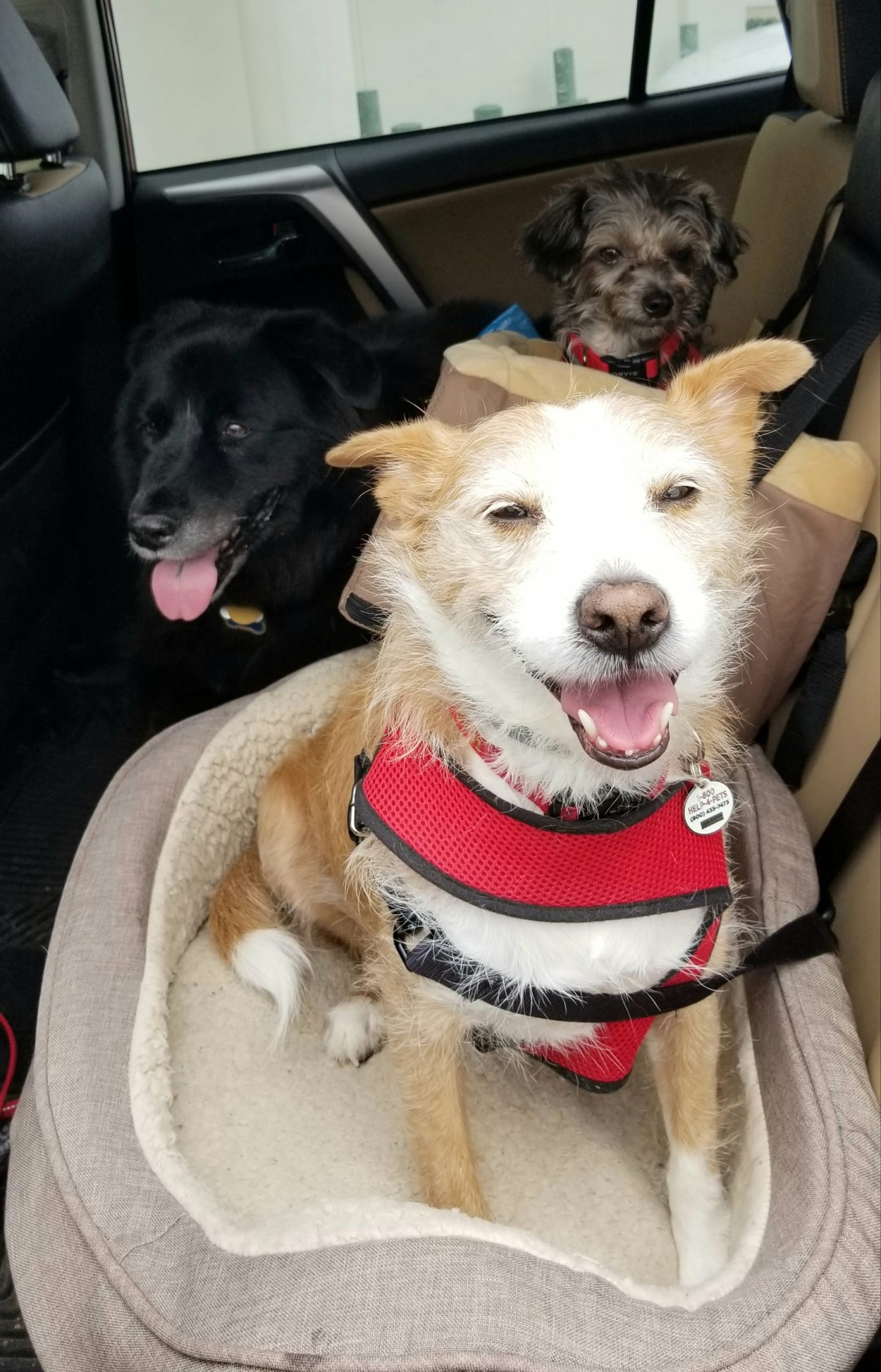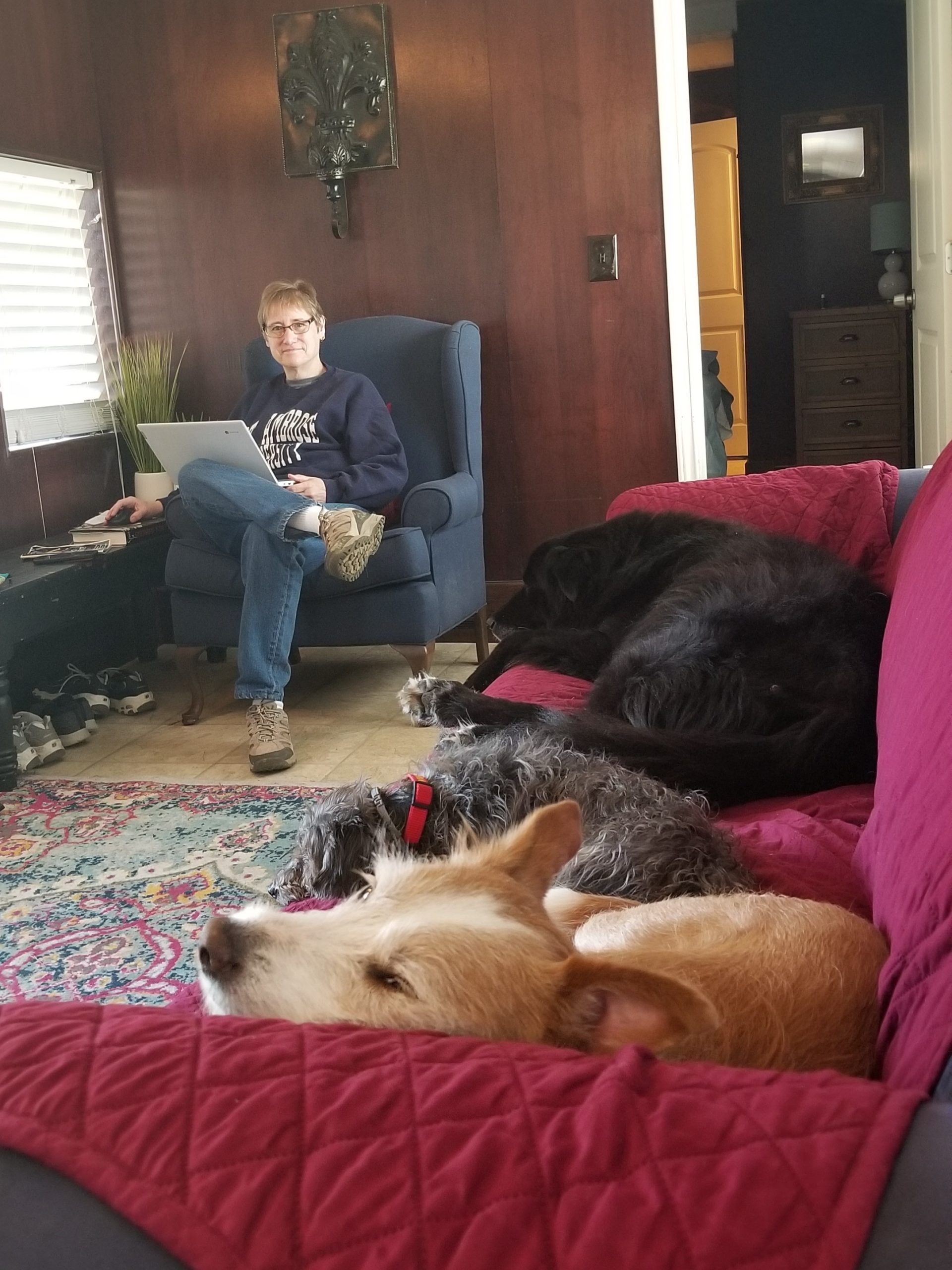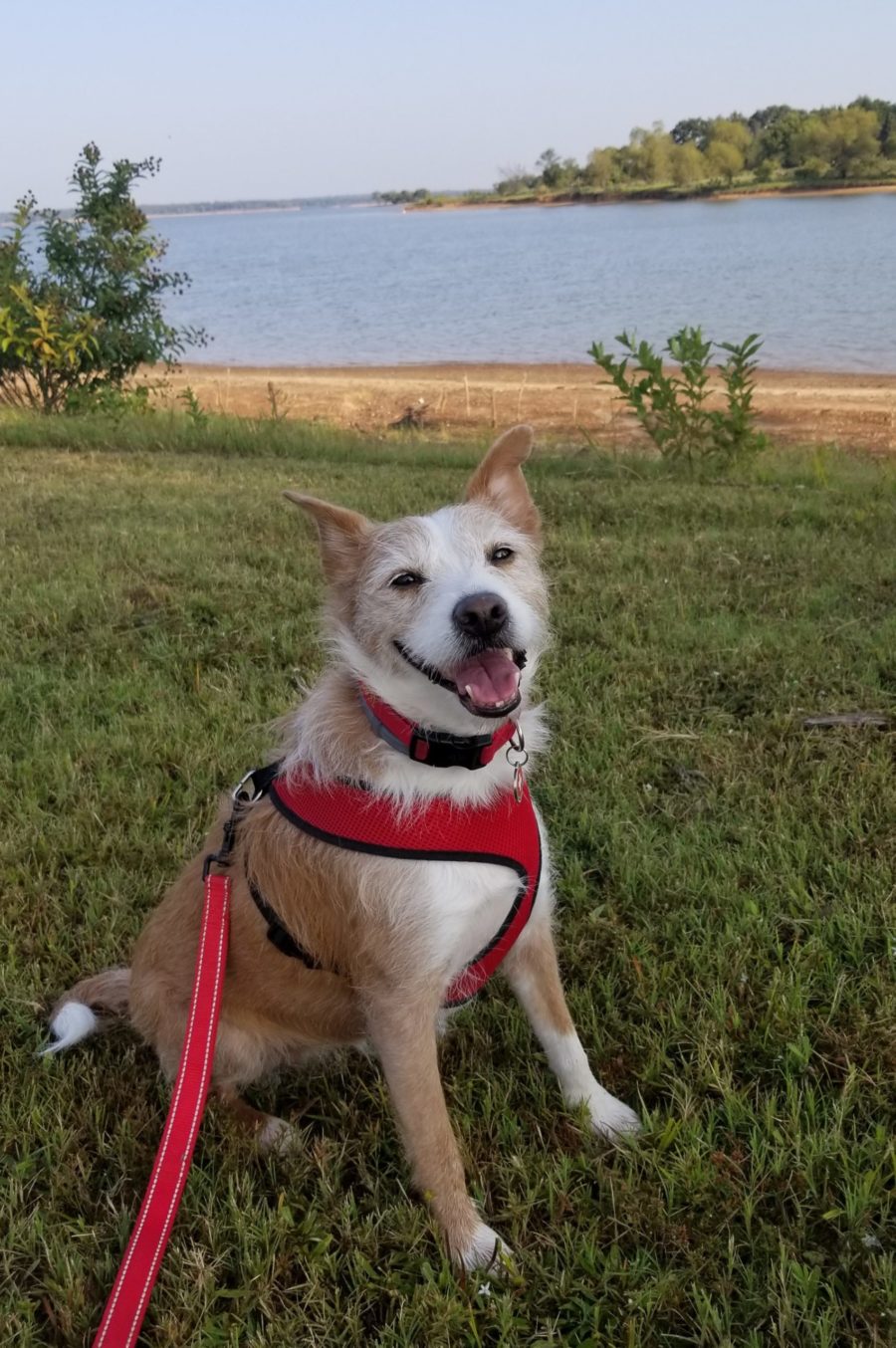Since the pandemic surfaced in March, you and your dog may be experiencing what I refer to as mutt rut. You and your pooch take multiple walks around the neighborhood each day: same route, same duration, same time. B-o-r-i-n-g.
So, it’s little wonder that you and your dog may be going a bit stir crazy being homebound, with social distancing, hand washing, and mask wearing still being the norms. You both are itching for new sights, sounds, and smells, but wanting to stay safe.
I know the feeling. And so do our three dogs: Bujeau, Kona, and Emma. Stuck at home as COVID-19 stubbornly sticks around, some dogs are acting out.
“Dogs who are bored at home and eager for new adventures in new places may demonstrate these behaviors: destroying pillows or other items, constantly seeking your attention, barking at things outside, begging for food more and trying to engage you more to play,” says Lisa Radosta, DVM, a board-certified veterinarian behaviorist who operates the Florida Veterinary Behavior Service clinic in West Palm Beach, Florida. She is a coauthor of From Fearful to Fear Free: A Positive Program to Free Your Dog from Anxiety, Fears and Phobias.
If that’s happening, it might be time to hit the road for a getaway, even if it’s nearby. Here are some do’s and don’ts for planning:
* Do read the fine print. My wife, Julie, and I thought we had booked a dream getaway via VRBO (Vacation Rentals By Owner). The 2-bedroom, 2-bath cabin on a large lake showed a photo of a happy Labrador retriever in a boat and the place said it was pet friendly. We booked it, agreed to pay the $250 non-refundable pet fee for our three-night stay and filled out the pet addendum – even including photos of our well-behaved trio. Then the owner wrote us back. She said her place welcomes only dogs under 40 pounds and only two per visit (not disclosed in the description). She said we could simply just bring 35-pound Kona and 9-pound Emma, but leave our gentle 90-pound Bujeau at home. We got our money refunded.
* Don’t give up. Be resourceful. I turned to my dog-loving Facebook friends for suggestions of places where dogs are welcomed. Friends wrote us about campgrounds on Lake Texoma (on the Texas-Oklahoma border) where the pet fee for cabin rentals is only $25 per pet per stay with no weight restrictions. More options can be found at sites such as BringFido.com and AirBnB.com – just make sure you confirm pet policies in writing in advance. To rent a recreational vehicle that permits pets on board, check out Cruise America and GoRving.
* Do pick a place within an easy drive. Chances are that you and your dogs have not traveled beyond the time it takes to reach your veterinary  clinic or pick up take-out food this year. I usually drive about 10,000 miles a year and this year, my odometer has registered only 1,500 miles as of October 1. To minimize stress for you and your dog, consider your first getaway of 2020 to be a short drive – maybe two to 3 hours away — so your dog can readjust to being in the vehicle again.
clinic or pick up take-out food this year. I usually drive about 10,000 miles a year and this year, my odometer has registered only 1,500 miles as of October 1. To minimize stress for you and your dog, consider your first getaway of 2020 to be a short drive – maybe two to 3 hours away — so your dog can readjust to being in the vehicle again.
“Familiarize your dog with travel before you are packed and ready to go,” adds Kathryn Primm, DVM, owner and veterinarian of Applebrook Animal Hospital in Ooltewah, Tennessee, and the nation’s first Fear Free Certified Professional. “A dog who gets car sick or seems anxious in the care might not be a pleasure to take with you.”
* Don’t forget to pack cleaning products. Don’t put yourself or your pets at risk by assuming the cabin, hotel, or other pet-friendly lodging has been thoroughly cleaned. Our dogs stayed in our car at the cabin as we went in with mask and gloves and wiped down all the surfaces. We also brought our own towels, bed sheets, and pillows.
 * Do remember your dog’s amenities and needs. We packed a large case of bottled water for our dogs and ourselves to ensure we all drank from a healthy water source and reduce the risk of canine upset stomachs from drinking water from the cabin’s faucets. We brought a few of their favorite toys, dog beds, and our sofa cover – three sources containing scents from home to make the cabin smell more familiar and welcoming. We also brought their food and healthy treats, extra leashes, plenty of poop bags, food and water bowls, and of course, a pet first aid kit. We also downloaded our dogs’ medical records on our phones in case campground officials wanted proof that they were healthy and updated on all vaccines and parasite preventives.
* Do remember your dog’s amenities and needs. We packed a large case of bottled water for our dogs and ourselves to ensure we all drank from a healthy water source and reduce the risk of canine upset stomachs from drinking water from the cabin’s faucets. We brought a few of their favorite toys, dog beds, and our sofa cover – three sources containing scents from home to make the cabin smell more familiar and welcoming. We also brought their food and healthy treats, extra leashes, plenty of poop bags, food and water bowls, and of course, a pet first aid kit. We also downloaded our dogs’ medical records on our phones in case campground officials wanted proof that they were healthy and updated on all vaccines and parasite preventives.
* Don’t do marathon walks on Day 1. Although you and your dogs may be eager to check out the new surroundings, gradually build up the length of your walks. Our first walk in the campgrounds with our dogs was 30 minutes. We brought the campground’s map as we explored new routes, with our longest walk being 90 minutes. Consult your veterinarian before the trip, and factor in your dog’s age, health, and fitness to avoid muscle strains or exhaustion. We always bring a collapsible water bowl, bottled water, and healthy snacks on our outings.
* Do pay attention to your surroundings. Reduce the risk of your dogs encountering snakes or wildlife by keeping them on leashes no longer than 6 feet. Steer them away from tall grasses to avoid burrs and ticks. Stick to trails as much as possible and always look all around you to spot any potential dangers. At night, if you enjoy making s’mores in a firepit, make sure your dogs are at a safe distance from hot embers or flying sparks. Always towel them and inspect their bodies from head to toe before coming back into the rental to make sure they are free of any bugs, twigs, or burrs.
I am happy to report that Bujeau, Kona, and Emma sported wide grins, downloaded lots of new smells, and enjoyed many naps during our three-night stay. By assessing how they did on a short trip, we are looking forward to a longer getaway with them soon.
This article was reviewed/edited by board-certified veterinary behaviorist Dr. Kenneth Martin and/or veterinary technician specialist in behavior Debbie Martin, LVT.
Arden Moore is The Pet Health and Safety Coach. She is a best-selling author, radio show host, in-demand speaker and master certified pet first aid/CPR instructor who travels the country teaching with Pet Safety Dog Kona and Pet Safety Cat Casey. Learn more at www.ardenmoore.com and www.facebook.com/ardenmoore.








